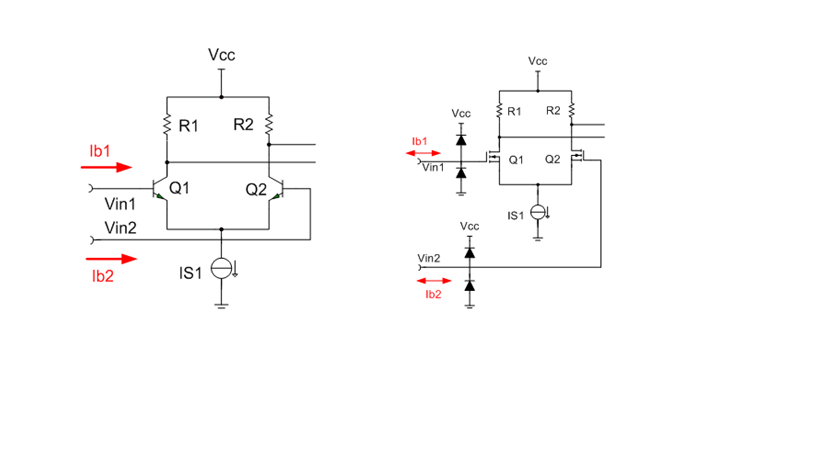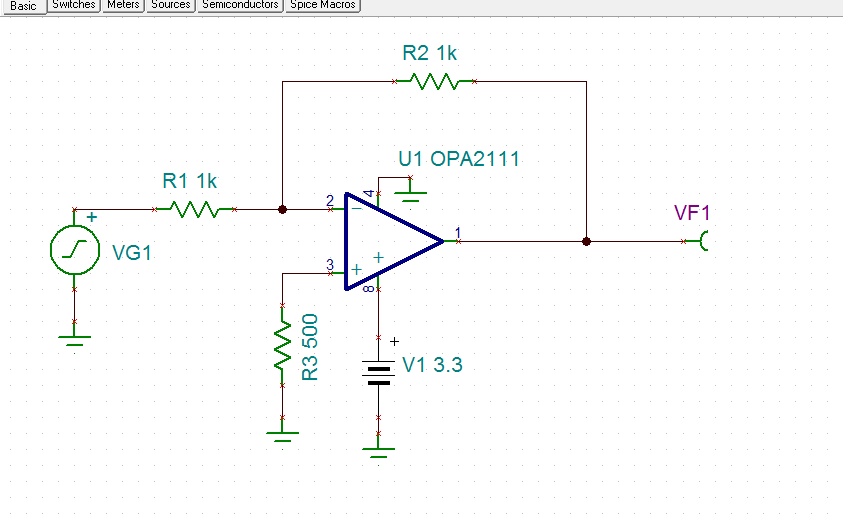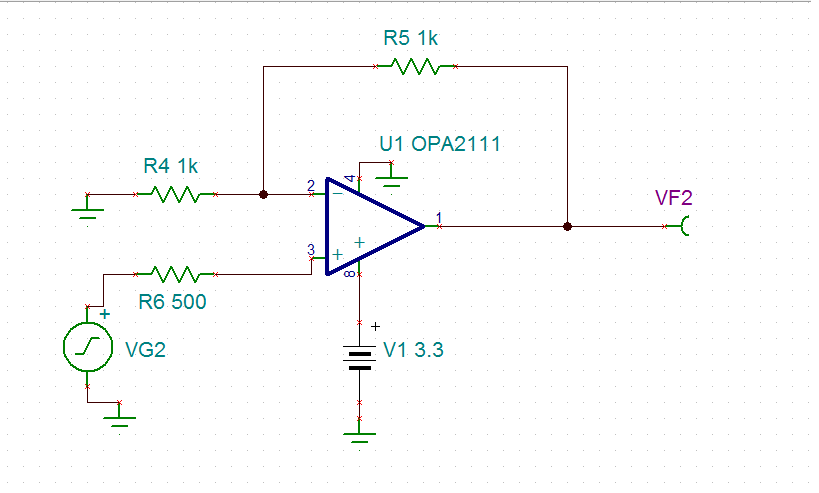Other Parts Discussed in Thread: OPA2210, OPA828, OPA320, LMP7721, OPA192
Hi,
I am a hardware engineer. I have some questions about the op amp bias current.
Q1: The bias current is supplied by the external circuit or the internal circuit?
Q2: If the bias current is supplied by the external circuit, for the invert amp circuit:
As below fig, VG1 and VF1 can supply the bias current to the 2 pin?
the 3 pin is connected to GND, who can supply the bias current to the 3 pin? I do not believe GND can supply the bias current to 3 pin.
FIG1
Q3: As below FIG2, For the phase amp circuit, VF2 can supply the bias current to 2pin?
FIG2
Q4: The output offset voltage is only affected by the bias current part: For FIG1, Vos= Ibias*(R1//R2)*Gain; For FIG2, Vos= Ibias*(R4//R5)*Gain, Correct?
If it is correct, I want to get why it is the (R1//R2) value and the (R4//R5) value? How to calculate?
Q5: I get use R3(fig1) and R6(fig2) to eliminate the bias current influence, correct?
If it is correct, why R3=R1//R2 and R6=R4//R5? How to get and derive the formula ?
Q6: I watched TI Precision Labs. I have a question as below: The offset voltage for the bias current is: Vib=ib*Req+ib*Rin. But Vib=ib*Req-ib*Rin is not correct? Why? How to get and derive the Vib formula ?
Q7: How to select the TIA op amp for the bias current? the bias current is less than the input current? Why? If the bias current is higher than the input current, what will happen to this?






